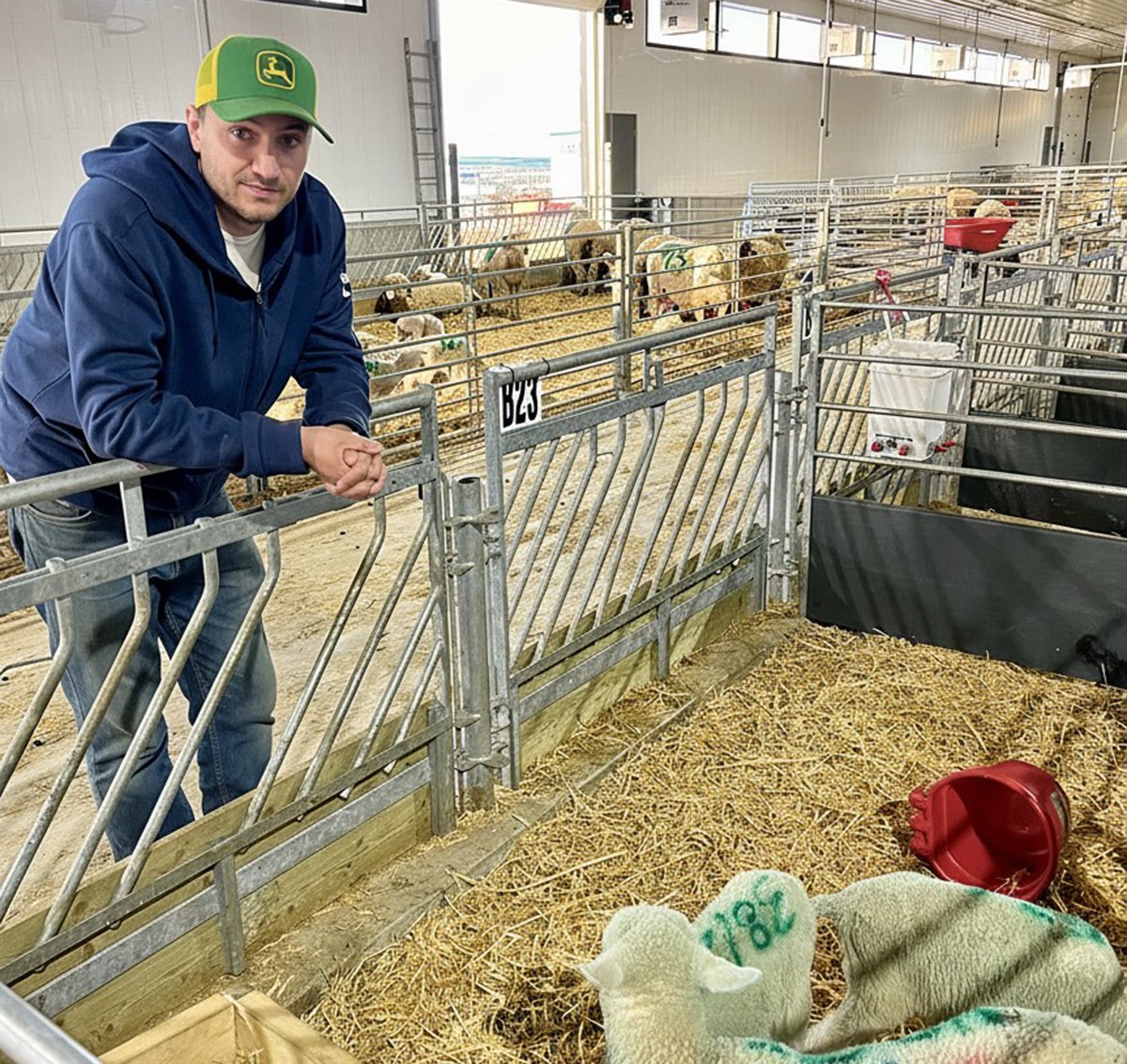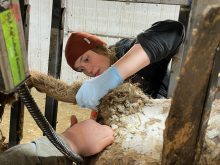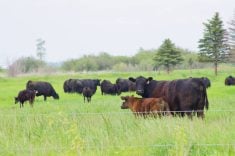Infectious bovine viral rhinotracheitis and bovine virus diarrhea virus are two common cattle viruses that can cause infertility, reproductive loss, abortions and other problems within the cow-calf herd.
The consequences of these infections in an unvaccinated herd can be devastating to a herd’s productivity.
Canadian beef cow herds should be vaccinated for these viruses on an annual basis.
All of the major vaccine companies produce effective vaccines for these viruses in both modified live and killed versions and often in combination with vaccines for other viruses or bacteria.
Read Also

Solar, sheep provide valuable farm diversification
Eric Steeves says raising sheep on forages grown under solar panels provided economic stability and perhaps even saved his family’s fifth generation southern Alberta grain farm.
IBR and BVDV can target the fetus and cause abortions. As a result, one of the most effective ways of protect the fetus is to vaccinate the cow with a modified live vaccine before breeding.
Other options can also be effective vaccine strategies, and producers should work with their veterinarians to establish the protocol that works best for their operation.
In some instances, modified live vaccines can be given safely to pregnant cows if the same vaccine has been administered within the previous year. Some vaccines have this clearance as part of their label instructions.
However, abortions may occasionally occur if modified live vaccines containing IBR or BVDV are given to pregnant cows that have not been previously vaccinated with the same vaccine.
Pre-breeding administration of modified live vaccines has been usually shown to provide the optimum protection for the fetus against IBR and BVDV. However, most of the modified live vaccines have a clear warning to administer the vaccine at least 28 to 30 days before breeding.
This warning exists because of the possibility that the modified live vaccine will cause a negative effect on ovarian function if given to previously unvaccinated (naive) animals around the time of breeding.
Scientific studies have evaluated the possible negative effects of giving modified live vaccines containing IBR and BVDV to cows or heifers at or very close to breeding time. Some of them have shown that the modified live IBR and BVDV vaccines can cause ovarian inflammation, which results in impaired ovarian function, prolonged inter-estrus intervals and temporary infertility.
These effects are temporary but may delay the first heat cycle, which may prevent the affected animals from becoming pregnant as early in the breeding period as possible.
Studies have also shown that modified live vaccines can be given very close to breeding time with no negative effects on reproduction as long as the animals have been previously vaccinated.
In a recent edition of the scientific journal Theriogenology, Dr. Paul Walz and his co-authors from Auburn University provide further evidence on the safety of these vaccines.
Walz and his colleagues vaccinated naive heifers with a modified live vaccine containing IBR and BVDV two days after they displayed heat and then again 10 days before breeding. The first dose was given 40 days before breeding.
The researchers compared the reproductive outcomes of these heifers with heifers that received their first dose at two days after they displayed heat and then again 31 days before breeding.
In this example, the first dose of the vaccine was given to the heifers almost 61 days before breeding.
They also compared two groups of heifers that were vaccinated with the same timing with killed vaccines.
All groups of heifers went through an estrus synchronization protocol and were then bred naturally by bulls.
Walz’s study showed that vaccination and revaccination of naive heifers with modified live vaccine did not cause any significant negative reproductive effects. The timing of the second dose closer to breeding did not hurt cycling or pregnancy.
The researchers compared the duration of the inter-estrus interval, the proportion of heifers showing estrus within five days after synchronization and the proportion of heifers showing embryonic loss during the study. All of these values were not different among the various treatment groups.
Most importantly, the pregnancy rates at the end of the study, the pregnancies resulting from the first five days of the breeding period and the average day of conception were similar among all the treatment groups.
It should be noted that the re-searchers gave the first dose of the vaccine to these heifers following the label instructions (more than 30 days before breeding) and the second dose was given “off label” in some of the treatment groups, at a time much closer to breeding. However, these heifers had already received one dose of the vaccine and were no longer completely naive.
This detailed study would seem to show similar results to a number of previous studies.
Modified live vaccines are safe to give and cause no negative reproductive consequences, especially if given to heifers or cows that have been previously vaccinated.
The 28 to 30 day interval before breeding should be followed whenever possible, but it is difficult to demonstrate negative reproductive effects if the vaccine is given closer to breeding, as long as the cattle have been previously vaccinated.
Vaccine protocols should be tailored to a producer’s specific operation. Follow the label directions on the vaccines and consult with your veterinarian to implement the most appropriate vaccine protocol that provides optimal protection without compromising reproductive performance.
John Campbell is head of Large Animal Clinical Sciences at the University of Saskatchewan’s Western College of Veterinary Medicine.














